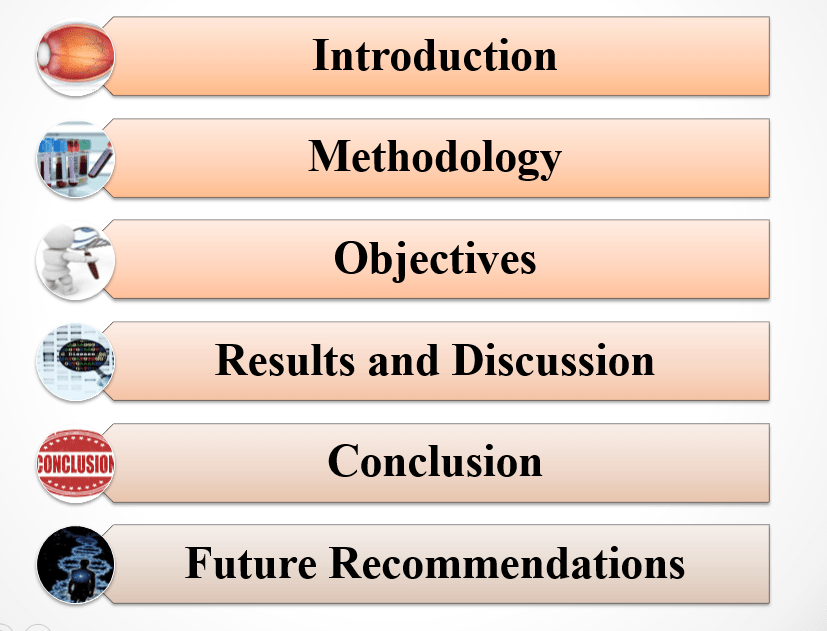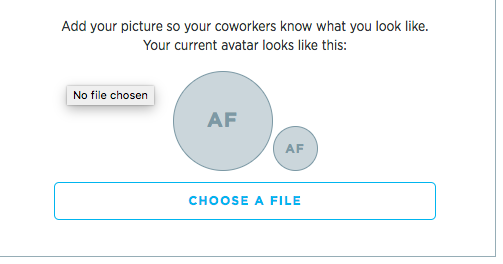
Once you have completed your outline, you're ready to do a "dry run" of your presentation. Starting at the beginning, give the oral presentation once all the way through. For the first dry run, do the presentation alone. See if it makes sense, if it feels clear and if you're able to move from topic to topic in a way that flows naturally and seems cohesive. If there are any problems, or if things seem unclear during the presentation, go back and revise your outline. If you find yourself stuck for things to say about a certain part of the outline, that's a sign that you need to go back and do more research on that particular topic to make sure that it all flows together without an issue.
Before preparing your oral presentation you'll likely need to do a decent amount of research. Regardless of whether or not you've written extensively about the topic prior to preparing your oral presentation, research is still a critical piece of preparing. Research is necessary to ensure that the information you're going to be giving is accurate and to the point. You may feel that you're already an expert on the topic you're going to discuss, but there is always the chance that you could learn more, and that the knowledge you gain from some research can change your oral presentation for the better.
Practicing with an audience will also help you relax and talk about your topic in a more conversational and less stiff manner. Once you give your oral presentation to your audience, you may find that some of the things you wrote in your outline feel redundant or unnecessary. If that's the case, you should plan to revise and remove anything that you think doesn't serve your message. Once you've practiced a few times and feel that you've made all necessary adjustments, keep running through the presentation again, either alone or with an audience, to further help you remember the flow of the topics and guarantee that you won't need to read too much from your outline.
Under each bullet point in your outline, write down any words, phrases or notes that will help you to remember the content for that particular part of the presentation. Build your whole outline this way, laying out the topic sentences at the heading of each section and using them as a jumping off point to start speaking about each one. Once you've arranged your list of bullet points in the order you plan to discuss them, you'll want to jot down the particular topic sentences and points you hope to make in each section. While you want to make sure that you include all the relevant topics in your oral report,
Practice With an Audience

< if (sources.length) < this.parentNode.removeChild(sources[0]); >else < this.onerror = null; this.src = fallback; >>)( [. this.parentNode.querySelectorAll('source')], arguments[0].target.currentSrc.replace(/\/$/, ''), '/public/images/logo-fallback.svg' )" loading="lazy">
< if (sources.length) < this.parentNode.removeChild(sources[0]); >else < this.onerror = null; this.src = fallback; >>)( [. this.parentNode.querySelectorAll('source')], arguments[0].target.currentSrc.replace(/\/$/, ''), '/public/images/logo-fallback.svg' )" loading="lazy">
< if (sources.length) < this.parentNode.removeChild(sources[0]); >else < this.onerror = null; this.src = fallback; >>)( [. this.parentNode.querySelectorAll('source')], arguments[0].target.currentSrc.replace(/\/$/, ''), '/public/images/logo-fallback.svg' )" loading="lazy">
Oral presentations are very different from written presentations. For one thing, the language you use in a written presentation, paper or article is significantly more formal than the kind of language that you'll use in an oral presentation. You'll want to make sure that your presentation is accessible to experts and non-experts, so unless they are absolutely necessary, you should take care to eliminate things like jargon, acronyms or insider terms that will make the presentation inaccessible to people who are not experts in your field. Oral presentations also require a connection and interaction with your audience. You'll need to lean heavily on your memory to be sure that you don't forget anything as you won't be reading off of a page. This is why writing an oral presentation requires significant practice and preparation.

- Consume only one slide
- Make it concise
- You are allowed to use fancy words or good vocabulary here
Write down your results, most possibly in the form of the table. Try not to confuse your audience with so much numerical data so charts will work fine. Highlight if you have something novel in your results.
There is a specific outline that experts recommend that you must follow during your research paper presentation.
disease. Focus on the things on which you have worked on. If you are working on genes of that disease then it will be important discuss the genetic pathways of the disease in your introduction.
Results and Discussion
Give the brief introduction of your work. For example, if you are going to work on a disease than describe the
Try to fit it in 2 slides only. Emphasis on any special equipment or build that you have used during your work.
Spending couple of months or years in research seems less difficult as compared to presenting it. Presenting your research work to a bunch of experts can be very difficult sometimes. Your audience will only like well-crafted presentation.
Tell your audience about the verifiable objectives you had while doing this research. It doesn’t matter if they vary from your results, it is necessary to tell the audience what were you looking for.

This is something you should use! Often, charts and diagrams can highlight or explain the message you are trying to deliver much better than any text but you have to use them carefully to avoid common mistakes as inappropriate size, lack of consistency, etc.
This is one of the most significant PowerPoint design tips! Although choosing fonts may not seem like a big problem, an inappropriate font can ruin the whole impression of your work! Choose fonts that will be easy to read and would look harmonious in your presentation.
How to make a great PowerPoint project? Although we have said that it is much easier than submitting a paper worthy of an A, you should not think that you will not come across certain challenges during this process. Keep in mind, that a good project delivers the necessary information to the audience but the best PowerPoint presentations engage, impress, and stay in memory for a long time. Therefore, your main goal is to make it informative and interesting! How to impress the class and your teacher? There are many factors that are going to influence the effectiveness and interest of your project, some of them are:
There are many nuances to consider. However, there is no reason to deny that a student has to adhere to a few important rules in order to create a winning project, so here we have gathered all these rules for you! They will help you rock your PPT presentation! Besides, these slide tips can also come in handy for those students who are wondering how to write an essay with Google Slides themes!
9 Rules On How To Make A Great PowerPoint Presentation?
There are many more PowerPoint tips to keep in mind. In this post, we are going to give you the top nine PowerPoint presentation tips that will definitely come in handy to every student or other people engaged in similar activities.
Another thing that contributes to the success of your presentation is your confidence as a speaker, which is not shown if you are reading from the slides all the time. One of the most important tips for a PPT presentation is to stay confident and do not use a written paper to read the whole text from!
Today, regardless of whether you are in a school, college or university, a PowerPoint presentation is a common and widely-used method of engaging students and evaluating their knowledge and skills. This form of a multimedia project is multipurpose. With the help of a good PowerPoint presentation, a teacher or professor can not only make a lesson more interactive and engaging for the class but also discover the knowledge and talents of his students.
Why does it matter? The main idea of a PowerPoint presentation is simplicity! This type of project does not have to be overloaded with text – this will be your function as a speaker to share more information with the audience while your slides only have to contain the main points! Therefore, minimize the amount of text!

Before beginning your outline, you'll want to get a rough list of everything you want to cover in your presentation. You can look for ideas by searching for an oral presentation example speech online or oral presentation tips for students. Make a list of bullet point topics that come to mind when you imagine the kinds of things you want to talk about. Then go back and cross out any points that are redundant and repetitious, and indicate if any points can be nested under a larger umbrella topic. Once you have a clear list of the items you want to discuss in your oral presentation, you can begin to create an outline.
It can also be scary because an oral presentation requires you to speak as the center of attention for a period of at least a few minutes. Many people are afraid of public speaking, and the idea of having to give an oral presentation can cause a great deal of anxiety. However, with preparedness and practice, you'll find that writing an oral presentation is less frightening than it seems.
< if (sources.length) < this.parentNode.removeChild(sources[0]); >else < this.onerror = null; this.src = fallback; >>)( [. this.parentNode.querySelectorAll('source')], arguments[0].target.currentSrc.replace(/\/$/, ''), '/public/images/logo-fallback.svg' )" loading="lazy">
< if (sources.length) < this.parentNode.removeChild(sources[0]); >else < this.onerror = null; this.src = fallback; >>)( [. this.parentNode.querySelectorAll('source')], arguments[0].target.currentSrc.replace(/\/$/, ''), '/public/images/logo-fallback.svg' )" loading="lazy">
The Importance of an Outline

An oral presentation can be a confusing and intimidating prospect. Often people are unclear as to what it actually is. An oral presentation is a verbal report or lecture or address about a particular topic or set of topics. It may include visual props, slides or video clips, but the bulk of the content is delivered from a speaker to an audience through words. It can be overwhelming to think of how to write an oral presentation, particularly if you've never done it before.
Getting feedback from people unfamiliar with your topic is also a good way to find out what questions an audience may have that you hadn't yet thought of. This can be helpful for you in terms of rewriting your outline or rewriting your oral presentation altogether to make it clearer, easier to understand and thus a more effective presentation.
< if (sources.length) < this.parentNode.removeChild(sources[0]); >else < this.onerror = null; this.src = fallback; >>)( [. this.parentNode.querySelectorAll('source')], arguments[0].target.currentSrc.replace(/\/$/, ''), '/public/images/logo-fallback.svg' )" loading="lazy">

As for pictures, charts, and other media, use them whenever appropriate. Don’t use too much because if you do, your presentation will look like a mess. Use charts when you’re presenting data. Use pictures, illustrations, videos, or other graphics when it can demonstrate your point easier than words can.
Before you jump into this tutorial, have a look at how to design a powerful presentation that will amaze your audience. The design is another important aspect of your slideshow, and writing your PowerPoint will not cut it if the slides don’t look good.
Everyone on the planet knows what a PowerPoint presentation is. We’ve all probably sat through at least 10 of these in school and at work, and I daresay most probably put half of the audience to sleep. And that’s not PowerPoint’s fault! It’s probably poor writing and poor execution. In today’s article, I’m going to show you how to write a great PowerPoint presentation that will keep your audience engaged with you and your slideshow.
If you’re entirely new to PowerPoint, it’s okay to take your time learning how the program works and learning what kind of writing and designing style suits you and your needs. You also don’t have to worry about following the things mentioned above to a tee. These are tips and guidelines, not rules and laws.
How To Organize A PowerPoint Presentation

There are three main things you have to keep in mind when writing your PowerPoint presentation: the content, the organization, and the delivery. The content is, as the name obviously states, the content of your PowerPoint. It’s the words, pictures, charts, videos, etc. included in your slides. The organization of your slides is the way the content is arranged, the design, and the animation and other effects. The delivery is your script and how you will incorporate your PowerPoint into your presentation.
If you want to be creative and really unique, you can also make your own template – choose your own background, accent colors, fonts, borders, etc. Just make sure that whatever template you do choose (whether it’s one of PowerPoint’s premade ones or your own) is appropriate for the nature of your presentation.
It would also be nice if you can write your script so that you spend roughly the same amount of time on your slides. It’s not really a big deal, but spending more time on some slides as compared to others gives off the feeling that you weren’t able to manage your slides well. Besides, your presentation would look much more put together if there is a steady flow of information when moving from one topic to the next.
